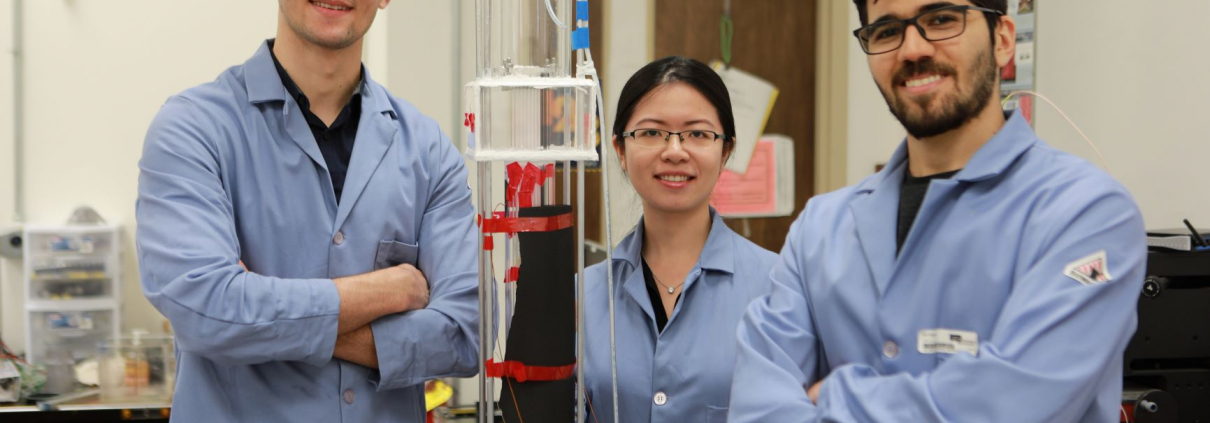Photo caption: Researchers Abolfazl Sadeghpour, the study’s co-lead author, Hangjie Ji and Navid Dehdari Ebrahimi with their experimental water capture setup.
Photo credit: Oszie Tarula/UCLA
A key element in the UCLA team’s system is its ability to consistently generate water droplets of the same size and constant flowing speed. These water beads enable the system to effectively capture water vapor, without causing significant pressure drop, and hence fan power consumption.
“The liquid beads form highly curved surfaces that enhance the rate at which water vapor diffuses through the air,” said Abolfazl Sadeghpour, a UCLA mechanical engineering graduate student and a co-lead author of the study. “Simply said, this is analogous to a snowball rolling downhill. The beads are picking up water vapor as they travel down. And while a drop may seem small, think of an entire array of threads working constantly. The water vapor harvested could add up to quite a bit.”
The study’s other co-lead author is recent mechanical engineering doctoral graduate Zezhi Zeng. Other authors are postdoctoral scholar Hangjie Ji of mathematics, UCLA graduate student Navid Dehdari Ebrahimi of mechanical and aerospace engineering, and Andrea Bertozzi, a distinguished professor of mathematics and mechanical and aerospace engineering and UCLA’s Besty Wood Knapp Professor for Innovation and Creativity.
The research was supported by the National Science Foundation and the Simons Foundation.
Reposted excerpt – Read the full UCLA Newsroom article here.

